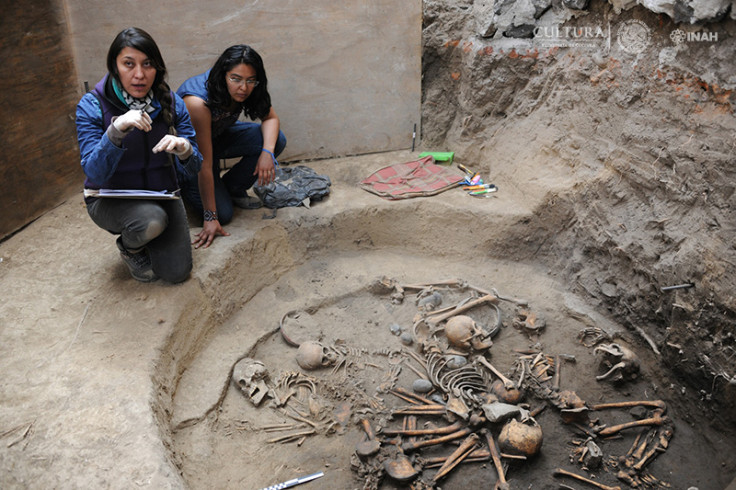Spiral of bones: Human skeletons arranged in spooky circular shape found in ancient Mexican pit
The discovery is not only the first of its kind but also points to some kind of ritualistic burial.

Nearly a dozen human skeletons arranged in a spooky circular formation have been discovered in an ancient Mexican pit in Tlalpan village. The surprising discovery was made by a group of archaeologists, who found the ancient burial site hiding four feet under a building that housed classrooms and dorms for priests.
This site, located to the south of present-day Mexico City, had 10 human skeletons interlocked with each other in an extremely weird manner.
Discovering centuries-old skeletons in a hidden burial site is not something new but these bodies, more than 2500 years old, were found lying on their sides and their arm bones were arranged in a spiral formation.
The discovery is not only the first of its kind but also points to some kind of ritualistic burial where people could have been intertwined in death, according to a statement from the National Institute of Anthropology and History.
"There was one individual over the other, for example: The head of the individual on the chest of the other, the hands of one individual under the other's back, the baby on the body of another," Jimena Rivera Jimena, who found the skeletons, told Mexican website Noticieros Televisa, Gizmodo reported.
So far, the group analysing the spooky skeletons has found that two of them were females while one was a male. While they are still working on the discovery, it has been confirmed that most of them were adolescents, with two young ones, a three- to five-year-old child and a one-month-old baby.
The exact cause of their death remains unclear but the archaeologists have noticed some deformities on their skull and teeth, which appeared intentional.
Cranial deformities have previously been spotted in the remains of Mesoamericans in the past, according to the Gizmodo report. It was done for a range of reasons such as for representing group affiliation or social status. Many ancient empires even used wooden boards to flatten skulls of newborn infants, Atlas Obscura reported. Among other things, the archaeologists also found ancient clay pots, ceramic spheres, stones and bowls inside the grave.
In a statement to National Geographic, Escamilla said Tlalpan, the village linked to this burial, would have thrived for about 500 years.
The archaeologist will continue to solve the mystery behind these skeletons, however, her primary goal is to use this and other similar discoveries to get more insights into human settlements dating back to Mexico's pre-classical period, which would correspond to sometime around 700BC to 200BC, way before the rise of the Aztec Empire.





















